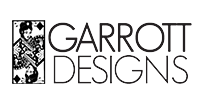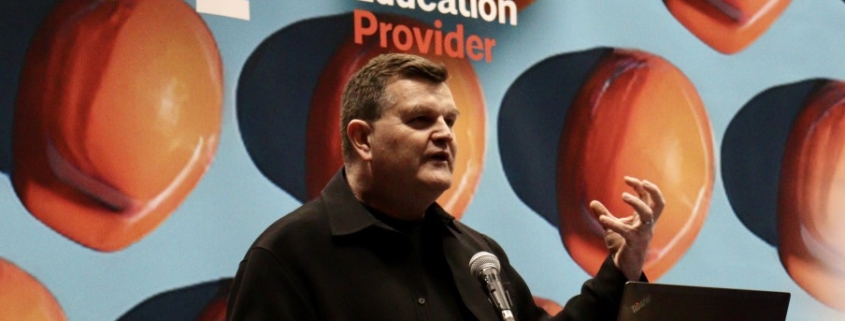BIG Mushrooms & The NYC Public Realm
Hey New York, how about we settle our disagreements outside?! That’s right, we all want a more livable city– a place that is greener, healthier, more affordable, a sense of community, more resources, less traffic, better spaces and places to go. We just disagree on how to get there.

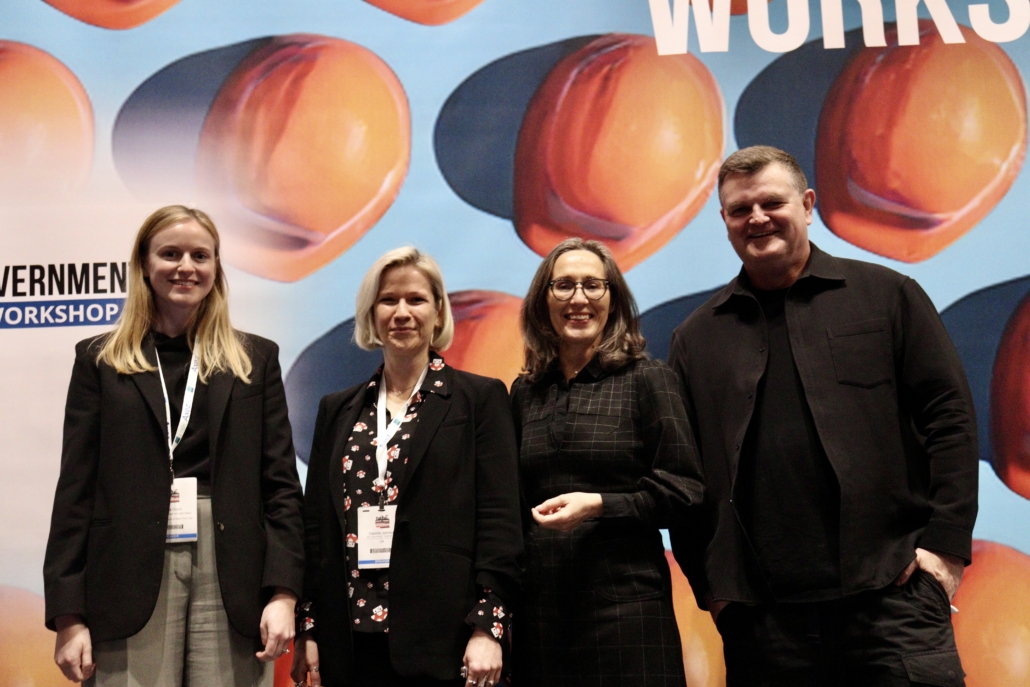
Photo Credit: Consulate General of Denmark in New York Used with Permission
At New York Build Expo, the largest construction conference in North America held March 12th- 13th, I had the pleasure of moderating a workshop with the City of New York Mayor’s Office of the Public Realm, architecture firm, Bjarke Ingles Group (BIG) and the Consulate General of Denmark in New York to talk about the future of outdoor dining, greening public spaces, and innovative building materials. There were mushrooms involved and the visions were fantastic! (More on that later)
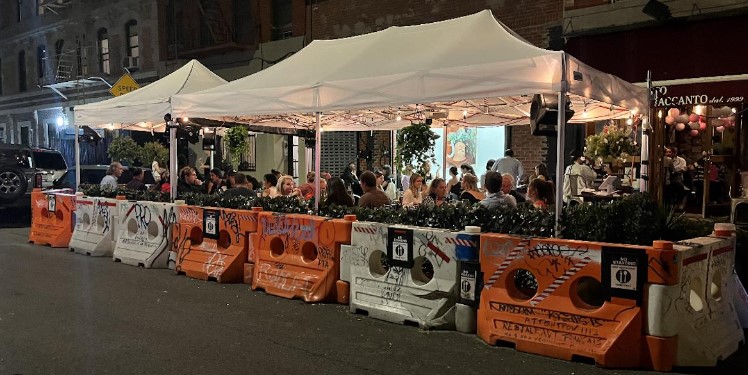
Outdoor dining has been a controversial topic post pandemic in New York City. The prolonged shut down forced people outdoors in order to be safely social and turns out, we kinda liked it! New Yorkers generally have embraced European style outdoor dining, even during winter months.

Subsequent policy extensions have ensured that New Yorkers can continue to enjoy that goodly neighborhood feeling and the fresh air. However, moving the concept and policy to permanence has had its challenges. From traffic congestion, ugly deteriorating structures to increased rat populations, the City has heard its share of complaints.
Open to the Public
But maybe love can save the day, or rather, ‘Hygge’. The NYC streets may be about to get a hygge makeover, thanks to the newly appointed public realm team at the Mayor’s Office of New York.
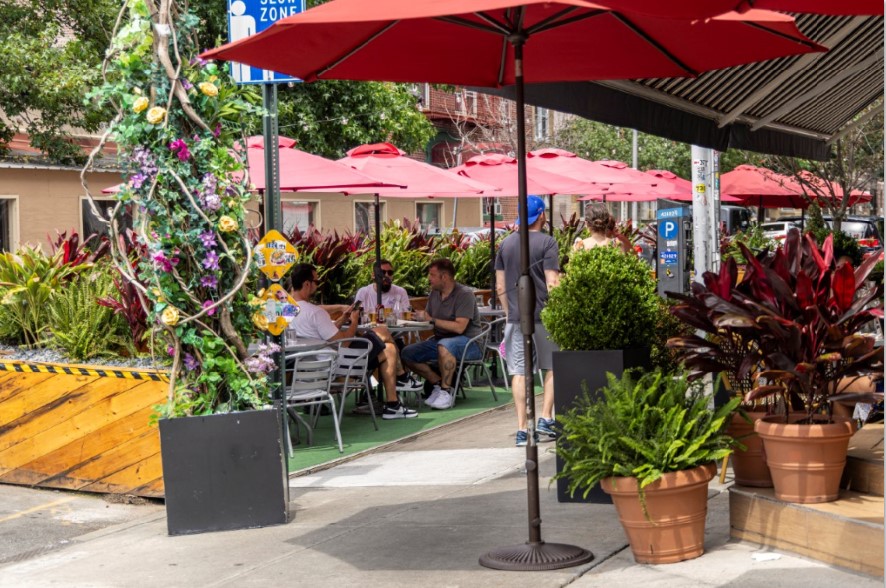
Photo used with Permission: Mayor’s Office for Public Realm
For those unfamiliar with the word ‘Hygge’, it’s a Danish word that roughly translates in English to “cozy”. It’s used to describe a style of design or lifestyle that evokes the feeling of gathering and enjoying good things in good company.
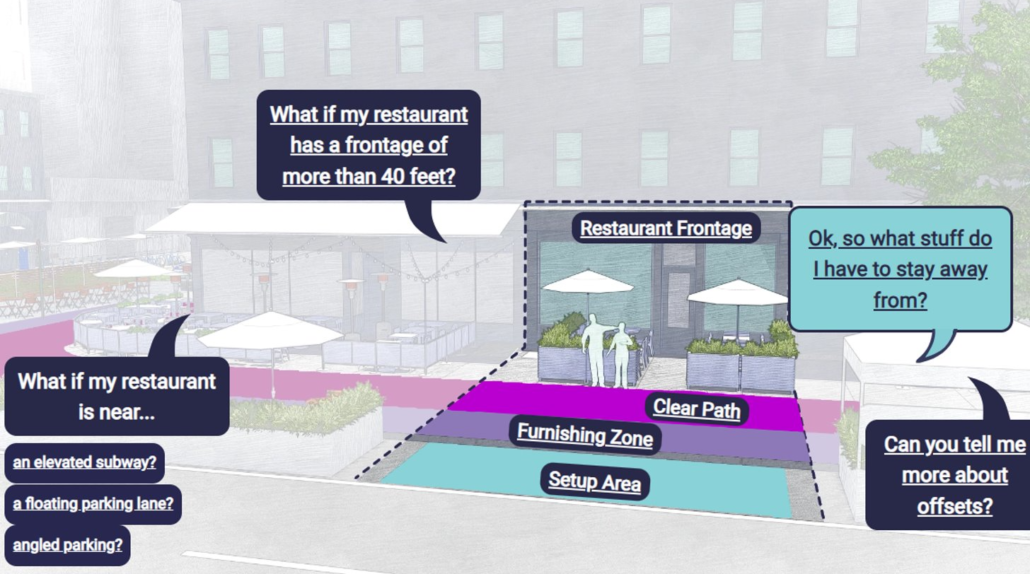
Photo used with Permission: Mayor’s Office for Public Realm

Photo Credit: Consulate General of Denmark in New York Used with Permission
Sonia Guior, Senior Policy Advisor for the Public Realm shared a vision for more sophisticated yet practical and standardized renderings of what could be possible.
She and her team are working with organizations such as the American Institute of Architects (AIANY) to address the discomforts of outdoor dining, create legal standards, and health code guidelines to develop and offer tools to keep the open venue, at the very least, as a seasonal perk to living our (hashtag) best city life.
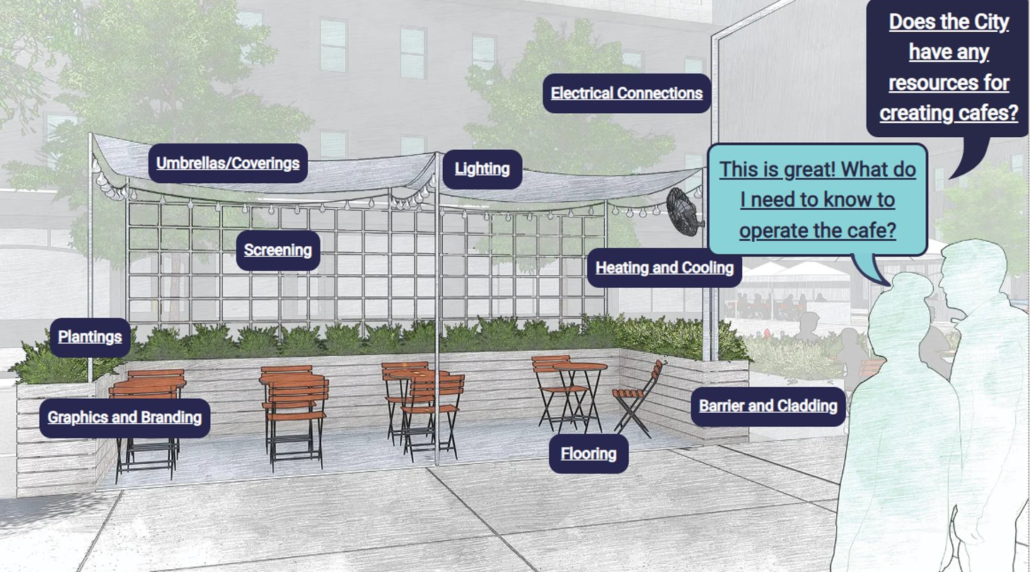
Photo used with Permission: Mayor’s Office for Public Realm
This could be an opportunity for architecture firms to collaborate with the City of New York to design modular kits for local businesses and restaurants.
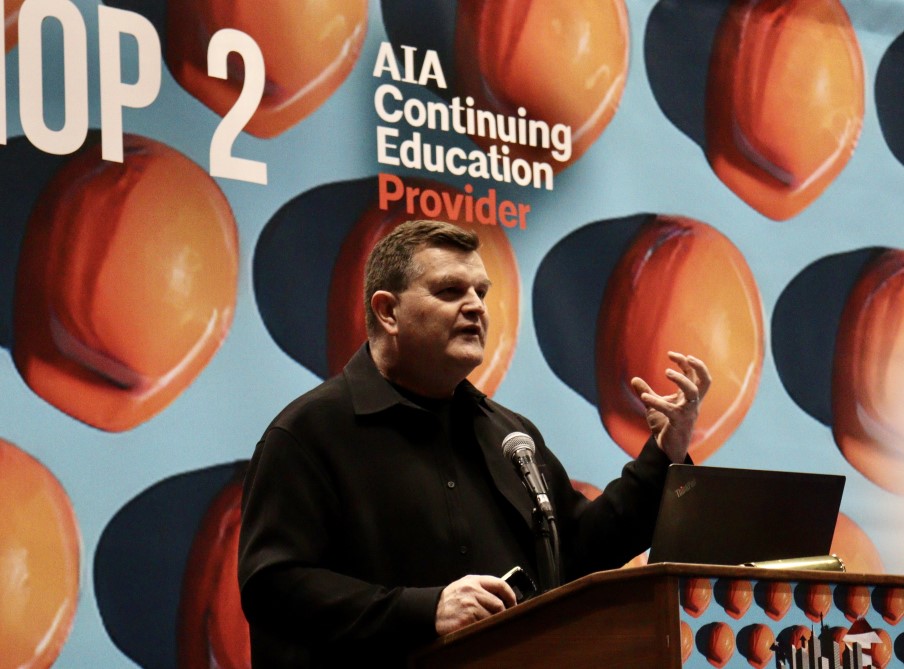
Photo Credit: Consulate General of Denmark in New York Used with Permission
Hygge in the Hood
Speaking of Hygge in the neighborhood, Kai-Uwe Bergmann, Partner at BIG, shared several visionary projects to serve as models and innovative materials that could be tested in the public realm as temporary spaces, and scaled for commercial use. Here is where the mushrooms come in!
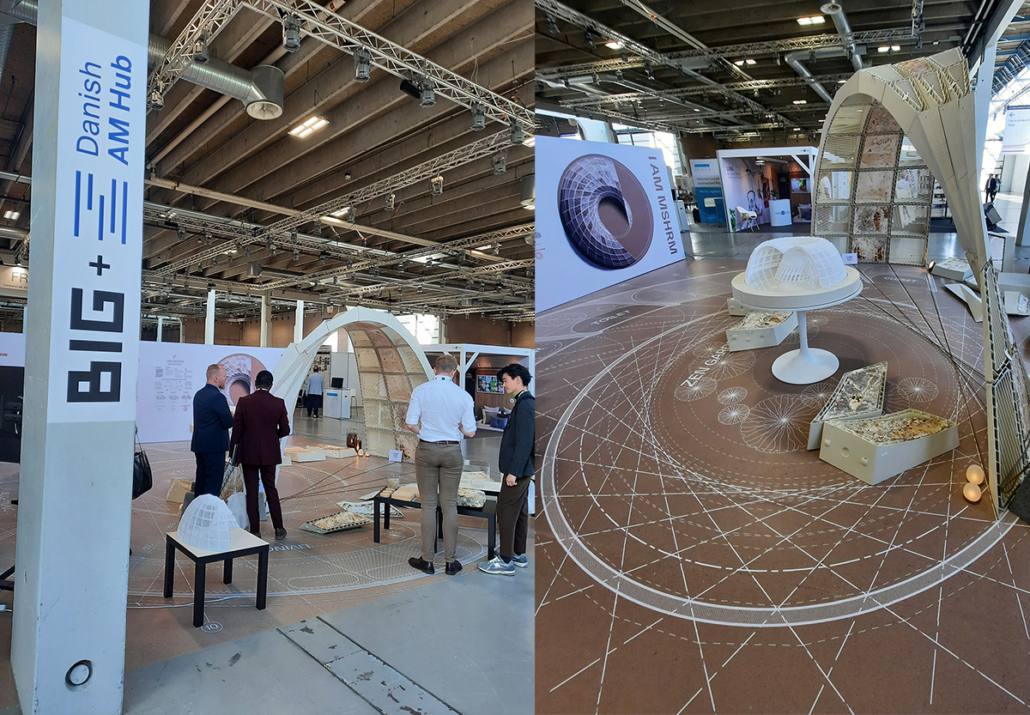
Photo Credit: Garette Johnson
BIG Mushrooms
In collaboration with Danish AM Hub, the I AM MSHRM project was designed and constructed of a 3D printed framework using plastic waste, locally sourced sugar cane and cornstarch (future iterations could be entirely printed with biomaterials).
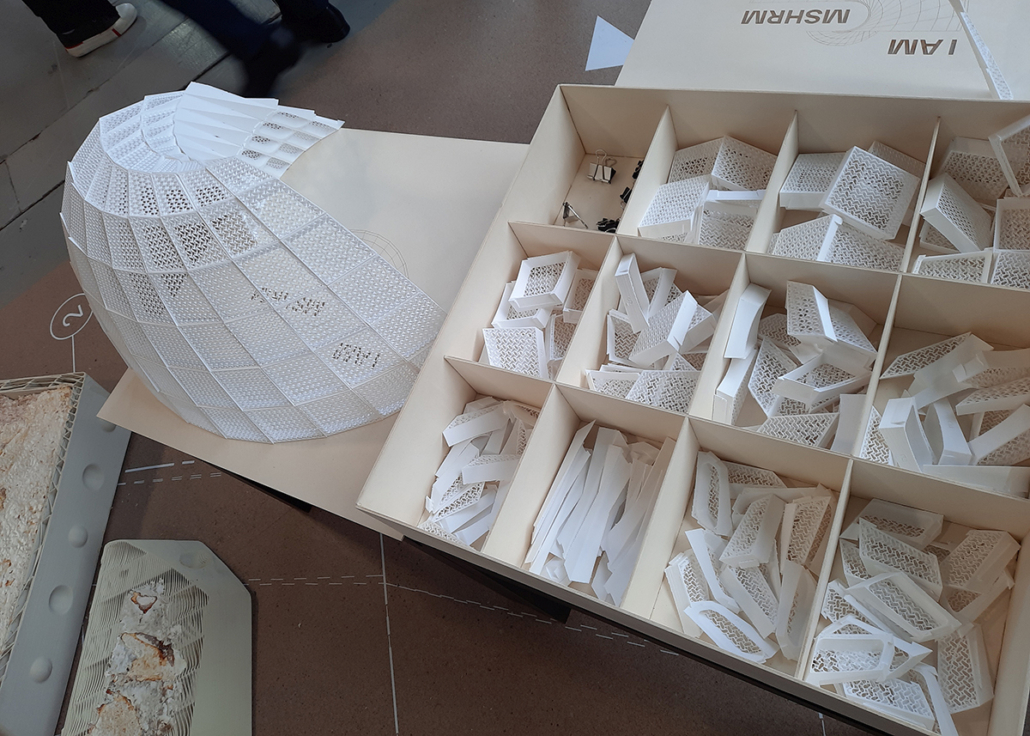
Photo Credit: Garette Johnson
The open areas of the arches are filled with mycelium, a naturally grown fungi to further reinforce the structure. Mycelium can be grown in approximately 20 days and is compostable, lending to the rapid deployment and end of life economy of temporary structures.
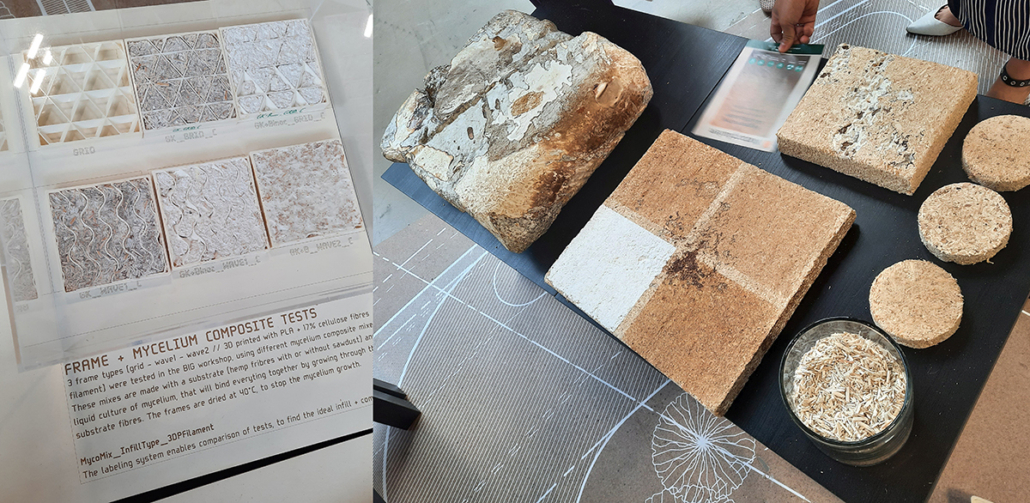
Photo Credit: Garette Johnson
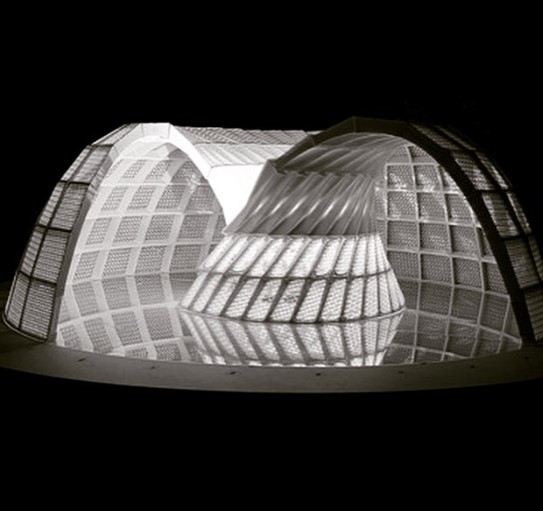
Photo Used with Permission: Bjarke Ingles Group
The model has been designed to be used as a quick and easy to assemble temporary emergency structure. However, the concept could scale for hospitality and commercial use.
If you geek out about biomaterials as much as I do and want to explore more about mycelium and the I AM MSHRM project, check out my article about biomaterials at the UIA World Architecture Congress last summer in Copenhagen.
Primordial Printing

Photo Credit: Jordan Vonderhaar Used with Permission: Bjarke Ingles Group
In that same article, I also wrote about biomaterials and modernizing traditional forms of primitive shelter making. Imagine a primordial language of architecture made possible and more resilient with 3D printing technology?
That is exactly what BIG created in the form of an amphitheater at SXSW in collaboration with Austin based technology company ICON and hospitality visionary Liz Lambert.
The concept will be further realized in the form of a luxury camping hotel compound in Marfa, Texas called El Cosmico. The project is expected to break ground in 2024. Talk about scalability!
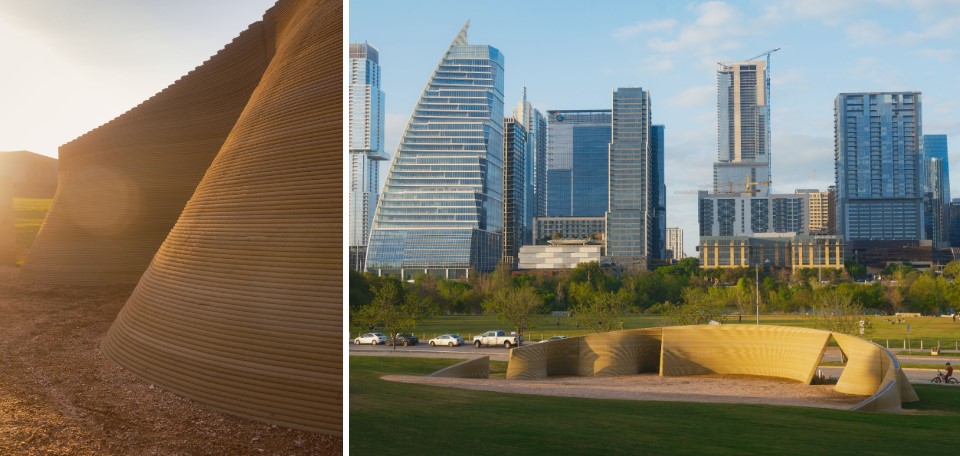
Photo Credit: Jordan Vonderhaar Used with Permission: Bjarke Ingles Group
Modular Mega Bloks
Another large-scale example he shared is the Serpentine Project, which explores a basic architectural element of a brick wall, when pulled apart, creates a sloped dimensional checkerboard. The simple construction of modular fiberglass boxes slide inward and outward via aluminum tracks. Visually, the shelter appears to “unzip” to an opening and provides spatial interest with an undulating interior, path and views through the translucent open-faced boxes.

Photo Credit: Iwan Baan Used with Permission: Bjarke Ingles Group
The scalability of a shelter like this could provide modular event space for city festivals, parks and recreation events, corporate receptions, art exhibitions, and even outdoor weddings.

Photo Credit: Iwan Baan Used with Permission: Bjarke Ingles Group
It’s inspiring to think about the opportunity to test and innovate with materials, structural shapes and construction on a temporary and modular playground such as outdoor dining. The endless potential for creating interesting and conceptual, branded dining experiences can also accelerate the viability of biomaterials while creating smart, and versatile structures capable of recycling and reuse. It’s an exciting playing field to watch and I hope we’ll begin to see BIG ideas happen in the BIG Apple.
